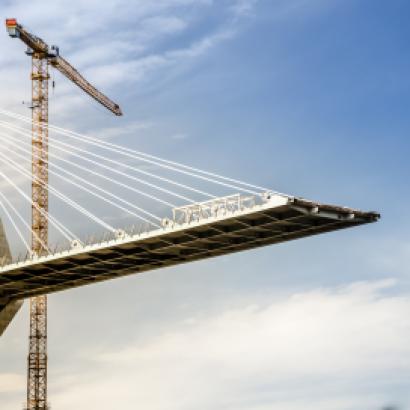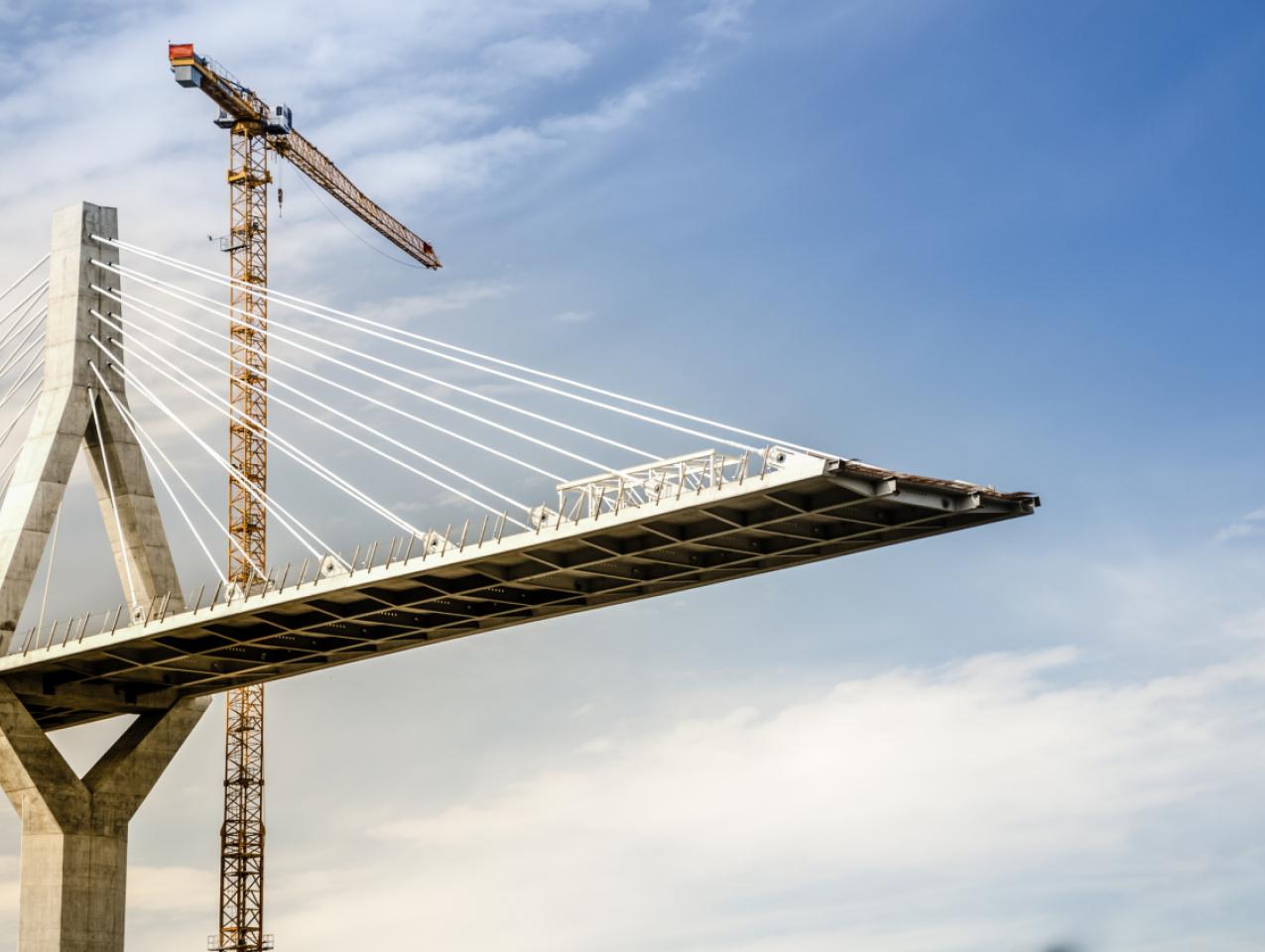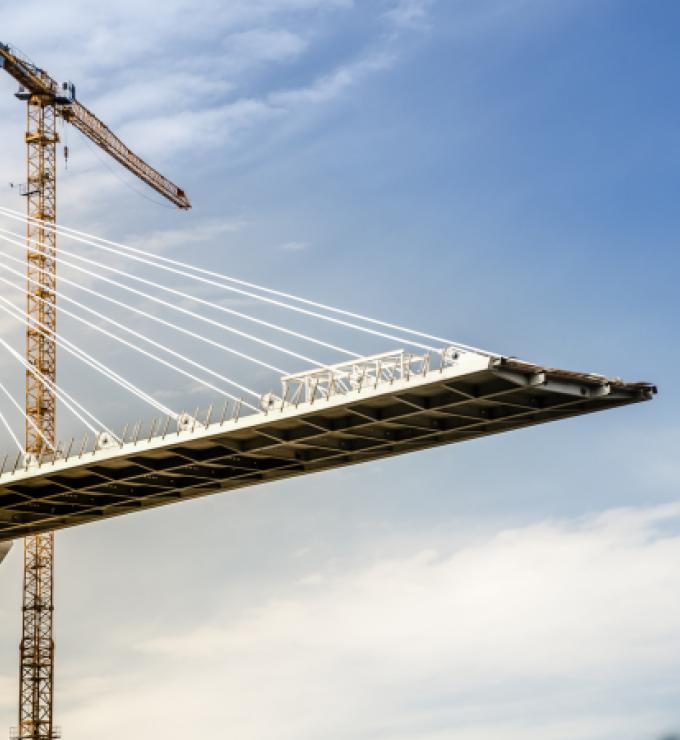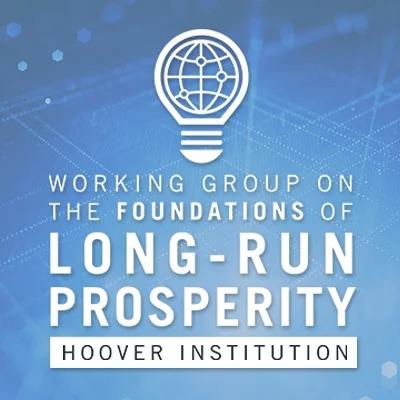- Economics
This essay is based on the working paper “The Global Infrastructure Gap: Potential, Perils, and a Framework for Distinction” by Camille Gardner and Peter Blair Henry.
In spite of enormous progress in the global economy since the end of World War II, there are still 1.2 billion people who have no access to electricity, and another billion who live more than two kilometers from a road that functions in all seasons. These aggregate realities are manifested by important differences in the level of infrastructure that workers in industrial countries have available to perform their tasks versus the level available to their counterparts in emerging and developing economies. For instance, average workers in Latin America have at their disposal only one quarter of the infrastructure of average workers in North America; the corresponding fraction for emerging and developing Asia in comparison with advanced Asia is less than one fifth; the forty-eight countries of sub-Saharan Africa together generate roughly the same amount of electricity as Spain.
These large discrepancies in infrastructure per worker are on course to widen in the decade ahead, because the working-age population in advanced economies is stagnant or falling as it continues to grow in developing nations like Nigeria, whose population ranks seventh globally and will expand between 2.6 and 3 percent per year from now until 2030. Additionally, a number of large, heavily populated countries in Africa and Asia (e.g., Egypt, Bangladesh, India, Pakistan, and the Philippines) will experience significant labor-force growth during this time frame. All told, between now and 2030, a systemically important subset of the least developed countries will add an average of 1.7 million new workers per month to their labor force—more than one and a half times the 1.1 million per month that China added during its unprecedented episode of economic growth from 1978 to 2012.
In principle, the combination of a boom in the developing world’s working-age population and a reallocation of savings from slower-growing rich countries to the financing of productive infrastructure investments in poor countries has the potential to boost both global growth and the return on savings in aging rich countries, delivering a positive-sum outcome for the world economy. Without rapid and sustained infrastructure investment in certain parts of the developing world, on the other hand, the demographic shift underway will exert increased pressure on immigration-averse advanced nations to absorb an ever-greater exodus of workers from a group of developing countries whose economies will lack the productive capacity to generate jobs for their local populations.
Because there is so much at stake with respect to improving the global allocation of infrastructure, in 2015 the World Bank, together with the African Development Bank, the Asian Development Bank, the Inter-American Development Bank, and the International Monetary Fund, issued a communiqué that claimed that by leveraging multilateral resources, private investors (e.g., pension funds, asset managers, and sovereign wealth funds) in rich countries could: (1) alleviate the shortage of infrastructure in poor countries; (2) achieve the sustainable development goals adopted by the World Bank in tandem with the United Nations; and (3) make money. The problem with the World Bank’s threefold claim is that at the time the communiqué was issued, neither the World Bank, governments in poor countries, nor potential investors had any way of evaluating whether or not the claim was accurate.
In our paper, “The Global Infrastructure Gap: Potential, Perils, and a Framework for Distinction,” Camille Gardner and I develop an approach that distinguishes those poor countries in which the World Bank’s threefold claim is tenable from those where it is not. We call our approach the “dual-hurdle framework,” because it applies the concept of a hurdle rate from corporate finance. When considering whether to undertake an investment, the investor considers whether the expected return on the investment will exceed the hurdle rate, the rate of return that the investor could earn by allocating their money elsewhere.
In the case of infrastructure investment in poor countries, there are two relevant hurdle rates. The first is the poor country’s social rate of return on private capital—the amount of GDP generated by an additional dollar of investment in private capital. Given a dollar of savings in a poor country, it is efficient to invest that dollar in the poor country’s infrastructure if the social rate of return on infrastructure in the poor country exceeds the social rate of return on its private capital. In effect, the poor country’s social rate of return on private capital is a hurdle rate that prospective investments in its infrastructure must clear ``to be the most productive allocation of a dollar of local savings.
The second hurdle rate is equally important. Consider a dollar of savings in a rich country. Because the typical rich country’s social rate of return on private capital exceeds its social rate of return on infrastructure, the rich country’s social rate of return on private capital is also the relevant benchmark for determining whether a dollar of rich-country savings can be used more productively at home or in the poor country. Specifically, if the social rate of return on infrastructure in the poor country is greater than the social rate of return on private capital in the rich country, then it is efficient to reallocate the dollar of savings from the rich country to finance investment in public capital in the poor country. Therefore, the social rate of return on private capital in the rich country constitutes a second hurdle rate for the poor country—one that the poor country’s social rate of return on infrastructure must clear for public capital in the poor country to be an efficient destination for rich-country savings.
Confronting the dual-hurdle framework with reality produces two revelations. First, there is a dearth of knowledge about the social rate of return on infrastructure investment in poor countries. Despite serial campaigns emphasizing the importance of infrastructure for development—including the 2015 communiqué touting the opportunity for private capital to leverage multilateral resources and move the world from “billions to trillions” of investment in infrastructure to achieve the sustainable development goals—successive presidents and boards of the World Bank have failed to marshal the wealth of talent under their direction to produce a common and current repository of estimates of the social rate of return on infrastructure that governments, savers, and investors can use to drive fact-based decisions about the efficiency of infrastructure investment in poor countries. The only existing source of explicit, comprehensive cross-country estimates of the social rates of return on infrastructure (e.g., roads and electricity) in poor countries is a white paper that was commissioned by the World Bank in the year 2000 and is based on data from 1985. Second, contrary to the communiqué’s message that poor countries contain widespread efficient infrastructure investment opportunities, only seven of the fifty-three poor countries included in the white paper cleared the dual-hurdle tests of efficiency in both roads and electricity.
For countries that did clear the dual hurdles, on the other hand, the social rate of return on infrastructure was large. For example, the average social rate of return on roads was 10.2 times greater than the average social rate of return on rich-country private capital. Compare this number with the excess financial returns on stock markets in poor countries. Before these stock markets were opened up to foreign investors in the late 1980s, the expected return on poor-country stocks was 1.5 times greater than the expected return on the Standard and Poor’s 500 stock market index. In other words, the excess-return multiplier on the infrastructure of poor countries in 1985 was roughly seven times larger (10.2 divided by 1.5) than the excess financial returns on poor-country equity. Stock market openings sparked the creation of a new class of rich-country savings vehicles—called emerging-market equity funds—that are now an almost-trillion-dollar industry.
Unlike the flood of savings that poured into emerging equity markets following the opening up period, however, there are two reasons why similar quantities of rich-country private capital did not—and still do not—flow into poor-country infrastructure. First, the absence of tradable financial claims on poor-country infrastructure in the 1980s (due in part to the lack of knowledge about social rates of return) made it impractical to pursue, at scale, private, rich-country financing of public, poor-country capital. Tradable claims of this nature now exist, and the dual-hurdle analysis provides a framework for distinguishing those countries where the excess-return multipliers on infrastructure may be large enough to incentivize the economically productive creation to further such claims from those countries where they are not. The new analysis of old information in the paper provides a template to apply to updated, cross-country data on social rates of return and demonstrates the urgency of the World Bank generating, validating, and disseminating that data as soon as possible.
Second, current and reliable information about prospective social rates of return on poor-country infrastructure is not sufficient to generate a globally efficient allocation of capital. When deciding where to put their money, rich-country savers care about what is optimal for them, not what is efficient for society. This means that they will allocate their savings in accordance with their prospective private rates of return, not the social ones. Because social returns may be greater than private returns, unless the World Bank and other international financial institutions can find a way to address this differential, savings will remain frozen in rich countries, powerless to facilitate efficient public capital formation in poor ones.
Read the full working paper here.
Peter Blair Henry is the Class of 1984 Senior Fellow at Stanford University’s Hoover Institution, senior fellow at Stanford’s Freeman Spogli Institute for International Studies, and dean emeritus of New York University’s Stern School of Business.
Research briefings highlight the findings of research featured in the Long-Run Prosperity Working Paper Series and broaden our understanding of what drives long-run economic growth.

















